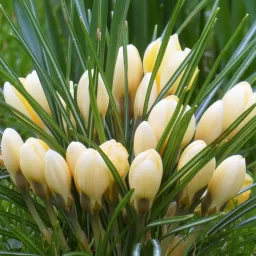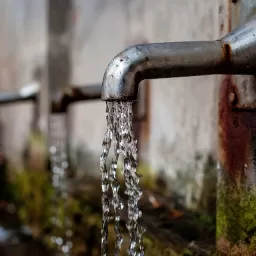Growing Roses in a Dry Mediterranean Climate – Is it Compatible With Water Conserving Gardening?
Roses, for the most part are very demanding in their water needs. With the exception of a number of species roses of Mediterranean and steppe-climate origin (i.e. Central Asia), the cultivated varieties known to the gardener consume, to perform at their best, 3-4 times more than drought resistant landscaping shrubs.
For instance, famous hybrid tea roses like Chrysler Imperial, Queen Elizabeth, or Peace, will require some 700mm (30in) of additional irrigation per year, in a dry Mediterranean climate that receives 250-450mm of winter rainfall. Compared to that, shrubs and bushes such as Viburnum, Pistachio, Melaleuca, or Grevillea can get by perfectly well on 100-200mm a year, and even less. The question is, how can roses be grown within the water limitations of a dry climate?
Before answering, let us remind ourselves just how uniquely special a great rose bush can be. What compares to a mass of fiery red floribundas by a whitewashed wall? Or the beauty and fragrance of so many of the fabulous Hybrid teas? There is a place for roses in most Mediterranean style gardens, if a way can be found to keep the water use down.
Defined Rose Beds
The first step, obviously, is to restrict the area that rose bushes cover, and to concentrate them in just one small part of the garden. Admittedly, this small part will need a lot of water, but you can offset their high consumption by planting drought resistant shrubs in the rest of the garden.
As well as some of the species just mentioned, you can add to the list plants like Junipers, Leocophyllum, Pittosporum, and Carissa, to name but a few. By happy coincidence, focusing the roses in one spot makes good design sense.
Irrigation – A Separate Line for the Rose Bed
Efficient water use demands that the roses need an irrigation regime separate from the other landscape bushes in the garden. It is not possible to save water if the water conserving plants are on the same line as the thirsty plants like roses.
Neither is it always wise to have the roses on the same line as other groups of high consumers such as topical plants nor annual flowers, because although the quantities required may be similar, the desired frequency between watering is often quite different. Despite being water guzzlers, roses are also sensitive to a lack of air in the root zone, so the high frequency regime appropriate for flowers could be very unsuitable for roses. Where possible then, give the roses their own, separate irrigation schedule.
Avoid Under Planting
Roses tend to struggle when they have to compete for water and nutrients with neighboring plants. Included in this category are prostrate plants grown to improve the visual effect of the ground plane. Under planting the roses inevitably leads to a need for adding more water, in order to compensate for the uptake by the low growing plants.
Instead of under planting then, it is far better from a water saving point of view, to spread a layer of organic mulch between the rose bushes. Aesthetically speaking, you can turn it to your advantage by using decorative wood chippings as a mulching medium. In addition, the roses will benefit from the cooler temperature of the topsoil and from less competition from weeds.
the gardener
#Growing #Roses #Dry #Mediterranean #Climate #Compatible #Water #Conserving #Gardening
Will be pleased to have you visit my pages on social networking .
Facebook page here.
Twitter account is here.
Linkedin account here
Post byBedewy for info askme VISIT GAHZLY



